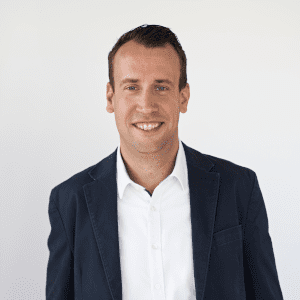Dedalus: Pink October
Interview with Marcus Muth

What is our contribution, as a Diagnostic Imaging IT department, to breast cancer diagnosis?
Based on our research, we know that female breast cancer is the most common form of cancer in the world, with more than 2 million new cases every year. In Diagnostic Imaging IT, we are focusing on supporting healthcare institutions to prevent and diagnose breast cancer, by designing solutions to go beyond the current infrastructure and organisational limits, such as the radiologist shortage. We strongly believe in designing solutions that can support medical imaging professionals in doing their jobs – for instance, we have recently started a new cooperation in Belgium with a cancer detection center, to implement a central archive for mammograms and share mammo screenings. We can leverage the ability to integrate with 3D visualisation and implement customised workflows for mammo reading. Ad hoc sharing can also be set up between institutions, through direct image transfer or by automatically exchanging specific studies based on predefined rules, so as to increase the amount of time available for direct patient care. In addition to that, we always provide a full set of functionalities to guarantee breast cancer diagnosis, such as Chest Wall Alignment, Automatic pairwise magnification for optimal display of the mammo on the screen, and Smart invert, among others.
What are the next challenges we want to face in relation to breast cancer?
As a Portfolio team in Diagnostic Imaging IT, we pursue the path towards a single, unified multidisciplinary suite built on a patient-centred imaging Service. Concerning breast cancer, in particular, it is crucial to determine what patients want and how to communicate with them, all while reducing time, which is the most critical resource to manage. In fact, based on our research, we have seen that in the event of abnormal
results, patients want to receive information through referring physicians in a faster way. Today, more patients can access their radiology reports and images through web patient portals. In this case, it is essential that radiology departments be prepared for more direct communication with patients, who may have questions about imaging results or request second opinions. This is especially true in the context of advanced imaging studies. In addition to that, we need to engage our patient in the care pathway, which is why we also need to pay attention to how to communicate with patients. In our research, we have observed that patient-centered communication requires patient-friendly reports based on vocabulary and explanations which are accessible for the patient.
Are there any new technologies which can improve patient outcomes?
Technology is a strong ally to move beyond the current limits of medical imaging. We are implementing Cloud computing and Artificial Intelligence in our DeepUnity suite. With the former, we can have a direct impact in terms of creating smoother and more effective workflows, for instance through automatic study exchange processes. At the same time, we can also have a direct impact on healthcare budget constraints.
We do not believe that Artificial Intelligence will replace Radiologists, but we strongly believe that it can be combined with their expertise. For instance, in case of a second opinion or a mammogram routine, AI technology can support radiologists in identifying anomalies faster, so that radiologists can focus more on understanding said anomalies and on applying a more informed diagnosis.

Marcus Muth
Head of Product Management DIIT